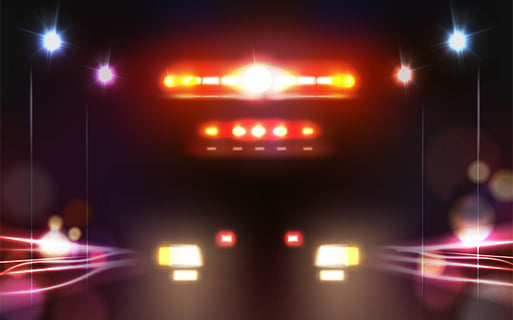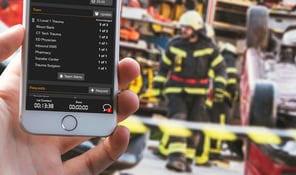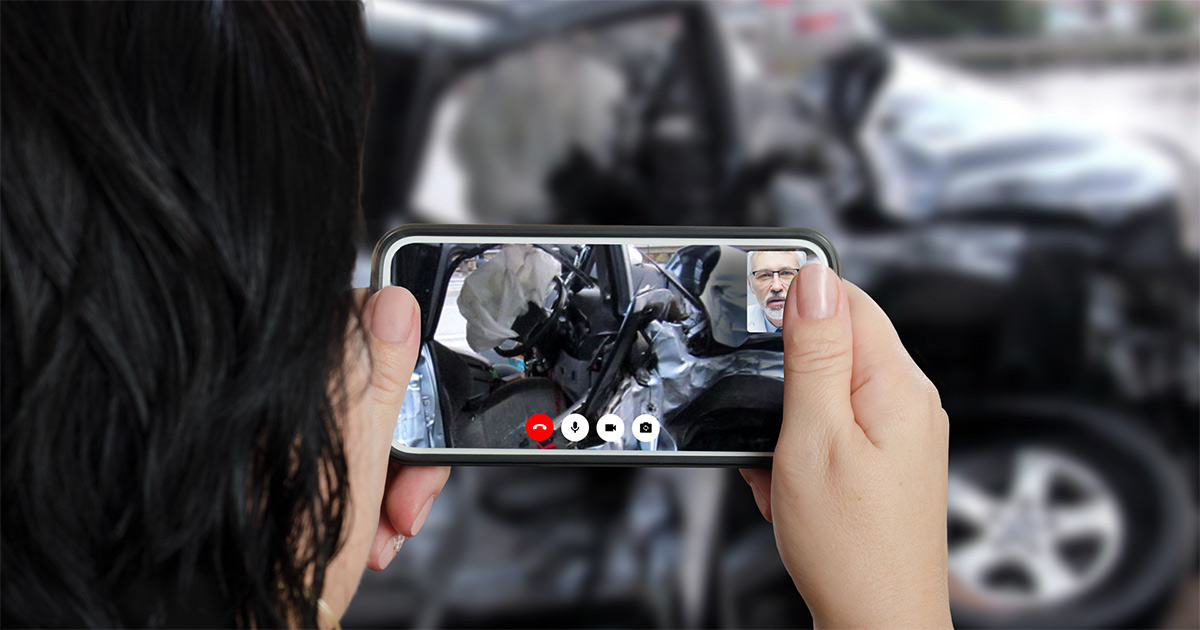EDITOR'S NOTE: Special thanks to Jessie Senini for writing today's blog post. You can connect with her on LinkedIn.
TRAUMA: Radio Report
A One-Act Play by Jessie Senini
Unit 3245 has responded to a motorcycle accident with two injured persons in the dead of night on a suburban road. Patient One is unresponsive, while Patient Two is alert but with severe injuries. Both are critical. With the update information from the bystander, dispatch is also calling out a second unit for the other patient, and fire is already responding to the scene. The location does not meet criteria for a helicopter (the ground units will be faster) and everyone is lights and sirens to get there.
Unit 3245 is the first to arrive, followed within a matter of seconds by Unit 3256. With appropriate EMS resources, the units divide and conquer, addressing their individual patients.
Unit 3245 takes a fire fighter to assist with care in the back of the unit en route to the trauma center. The fire fighter is bagging the patient after all current appropriate treatment has been rendered on scene.
Medic on Radio: MHC Hospital, this is Unit 3245 patient report.
MHC Hospital: *no answer*
Medic on Radio: MHC Hospital, this is Unit 3245 patient report TRAUMA ACTIVATION.
MHC Hospital: (obvious delay) ………………….. Yes go ahead Unit 3245 with your report
Medic on Radio:
We are en route to you with a 15 minute ETA trauma activation. Patient is a young adult male motorcycle accident, no helmet. GSC 11, Vitals are BP 90 over 40, Heart rate of 120, O2 sats are dropping, attempting to intubate but clenched jaw. Open right lower leg fracture, patient is c-spined and IV access obtained. Critical. See you at the door.
MHC Hospital: Copy that – you said you do have an IV?
Medic on Radio: (bouncing down the road) – yes, bilateral IV access established.
MHC Hospital: And can you repeat that GCS?
Medic on Radio: (Fire Fighter's voice from Medic's radio, while they attempt to intubate the patient) GCS of 11
MHC Hospital: Did you get a blood glucose?
Medic on Radio: (back to Medic’s voice) MHC, we are trying to suction and intubate this patient, we are now 8 minutes or so out. Get ready, we will see you in the trauma room.
END SCENE.

If this sounds silly or fake, well, you might have already guessed: This was a real call…one of my calls. I was the medic in the second unit listening to this report as we transported the second patient who was in bad shape, but not as critical as the first patient. I could hear the absolute frustration in the medic's voice, grappling with a difficult airway as they bounced down the same road as us. If it was bad for me, I’d hate to be fighting a clenched jaw with a laryngoscope blade in my hand. I could feel the medic's eye-roll when the hospital asked for a glucose. It’s not that this information isn’t helpful, but in the line of questioning, it wasn’t top priority—not when you only have so many hands.
Long story short, the report took way too long, merited repeating activation with no answer from the hospital, involved repeat questioning, and information could not be provided when patient care needed to be rendered.
But...what if we played this scenario out with a quick change?
[Same Scene Situation]
Medics and fire are rendering care on scene. One fire crew member opens their Pulsara app.
Fire crew member: (Opens Pulsara app) Where are we transporting to?
Medic: Trauma Center MHC.
 Fire opens the patient channel and adds the patient contact time. They snap pictures of the patient, showing him c-spine immobilized and with IVs; the motorcycle; and the ID police found. Fire then selects the EMS unit in the app that will be transporting the patient, and even updates their en route time when they leave the scene.
Fire opens the patient channel and adds the patient contact time. They snap pictures of the patient, showing him c-spine immobilized and with IVs; the motorcycle; and the ID police found. Fire then selects the EMS unit in the app that will be transporting the patient, and even updates their en route time when they leave the scene.
Instead of grabbing the radio and trying to hail the hospital, the Medic on Unit 3245 now instead grabs their phone and opens the app to the patient channel Fire has already started. Medic snaps a picture of the monitor for vitals, records the report as an audio clip, and hits ACTIVATE.
MHC Hospital staff receive the alert on their phone.
Back in the ambulance, EMS hears the “HOSPITAL ACKNOWLEDGED ALERT.”
Medic: Good – they got my report.
MHC Hospital receives the alert, sees the images of the patient ID (with the patient's name, DOB, gender, and weight), the accident and injuries with treatments rendered, and listens to the audio clip provided by the medic. The physician doesn’t catch it all the first time, so they hit the “play” button again.
MHC Hospital: Activate a Full Trauma Alert – the unit will be here in 15 minutes.
Hospital Staff push the ACTIVATE button, and all internal hospital teams receive the same information instantaneously.
END SCENE. Lights fade on stage and curtains lower.
***
Where was this when I was a medic?

For more information on how Pulsara can help your EMS and hospital teams communicate more effectively for trauma activations, visit our page on Pulsara + Trauma.
 Team Pulsara
Team Pulsara


 Fire
Fire ![[PRESS RELEASE] Published Research Finds Up to 31% Faster STEMI Treatment Times in Rural Hospital Setting with Pulsara](https://www.pulsara.com/hubfs/_1_website-page-blog-assets/pulsara-hosp-teams-assign-cardio-stemi-rn-1200x701.jpg)

